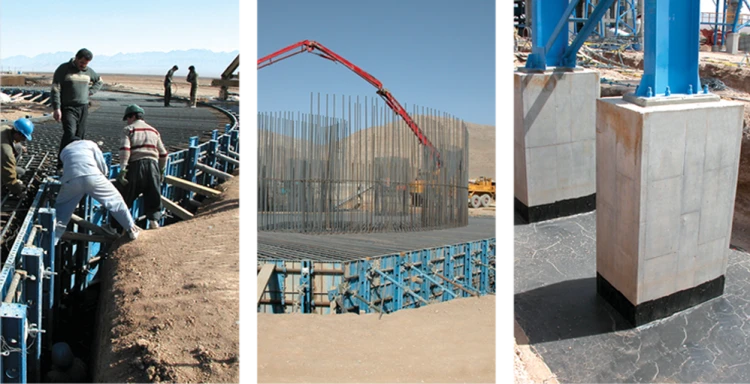MODULAR FORMWORKS
Modular formworks are very economical in concrete projects. That’s because these types of concrete forms can be reused several times. Another reason is that modular forms can be used for different types of elements such as columns, beams, slab, and foundation. The face of these panels are made of 3 mm steel sheets and 5 mm punched steel straps. Hardener straps are from 3 mm or 4 mm steel sheets. The width of these panels can vary every 5 cm; the width can be from 10 cm to 50 cm and their length can be 100 cm, 150 cm or 200 cm. We also produce panels with holes in them for tie bolts which are usually needed in concrete walls. The panels produced by Tesko usually have 5 cm or 6 cm width steel straps. Each square meter of a 5 cm strapped panel has a weight of 38.5 kg and each square meter of a 6 cm strapped panel has a weight of 44 kg. Tesko can deliver modular forms in sizes needed for your project in a short period of time. Modular forms are usually divided into 4 major categories:

Steel modular formwork for walls
These types of formworks are usually used in both sides of a wall. For the design of these types of formworks, one should pay attention to the wall height and the corresponding lateral pressure of fresh concrete. Adequate supports are needed to ensure formwork stability. These types of formwork systems are made of the following items:
Modular panels with different sizes that are connected to each other by pins and wedges. These panels are made of steel sheets and straps.
Seal tie rods to transfer fresh concrete lateral load to other parts of the formwork system. These tie rods pass from the holes inside the panels and are connected to the soldiers and vertical supports by anchor plate and wing nut. The desired distance between tie rods is 1 m horizontally and 0.5 m vertically. The vertical distance can be considered 1 m at the top of the wall.
Horizontal pipes with 0.5 m distance from each other that are connected to panels.
Vertical soldiers with 1 m distance from each other to support the hydrostatic pressure of fresh concrete.
Bolts to connect soldiers to pipes with anchor plate and wing nut.
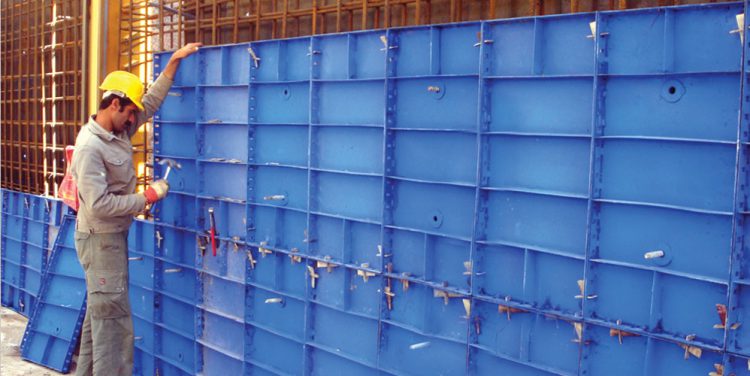
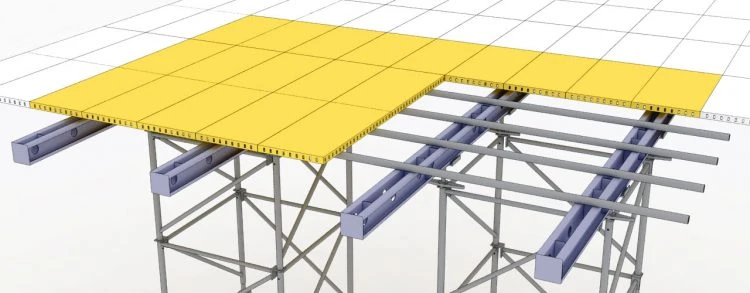
Steel modular formwork for slabs and beams
Modular forms are typically used for beams and floor slabs. Beam formwork usually consists of a bottom putter panel and two suspended side panels. The bottom putter panel is usually put on the shoring/scaffolding first and then the side panels are connected to it. For the stability of the formwork, special supports are used. For beams with depth more than 50 cm, tie rods are recommended to be used for the internal stability of the formwork against the lateral load of fresh concrete.
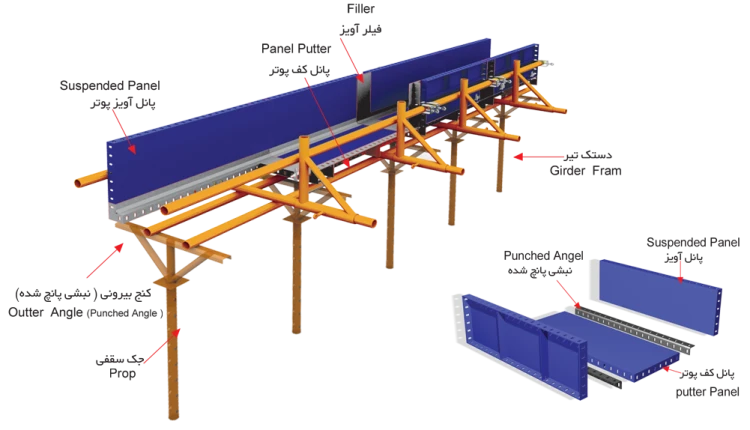
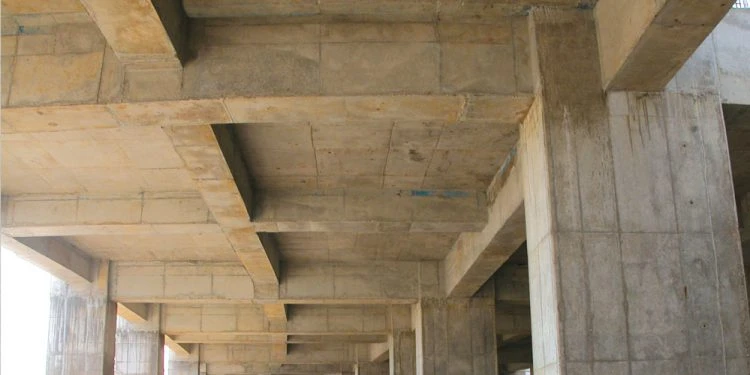
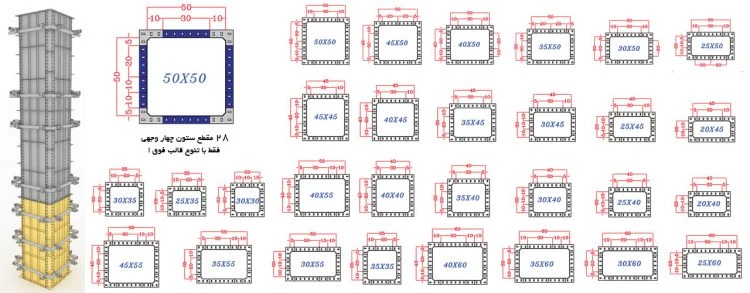
Steel modular formwork for rectangular columns
By the use of modular parts, a square or rectangular section with desired dimensions can be formed. Pouring concrete in columns is usually done at high speed and since the available access section is limited compared to walls, special gates are provided for tall columns. These gates are used for pouring concrete and vibration. Tesko provides special gates for that purpose.
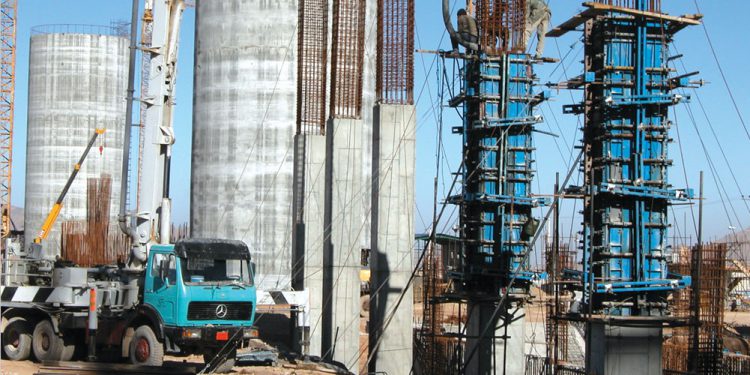
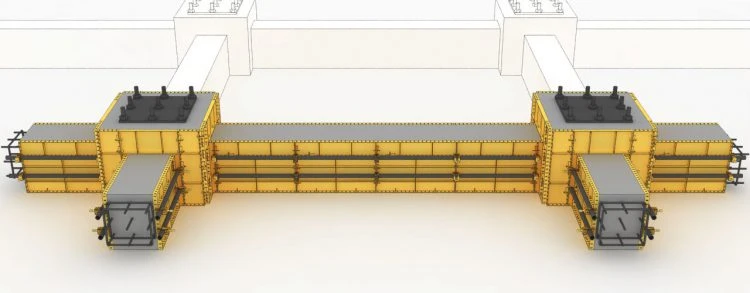
Steel modular formwork for foundations
The formwork for all different types of foundations such as spread footing, strip footing, combined footing, strap footing, sloped footing, and pedestal can be constructed by modular forms in an easy, economic, and fast way. These foundation formworks are made by combining panels, corners, pipes, wedges, and pins.
Foundations usually have a great volume of concrete. Pouring foundation concrete results in lateral and uplift loads that requires the followings to be taken into account:
Stability of the whole formwork
Supporting the hydrostatic lateral load of fresh concrete
Resistance to the uplift load of fresh concrete
By the use of tensile bolts, buried elements, diagonal supports, special connections and plumbing jacks one can achieve stability and support lateral and uplift loads of fresh concrete.
